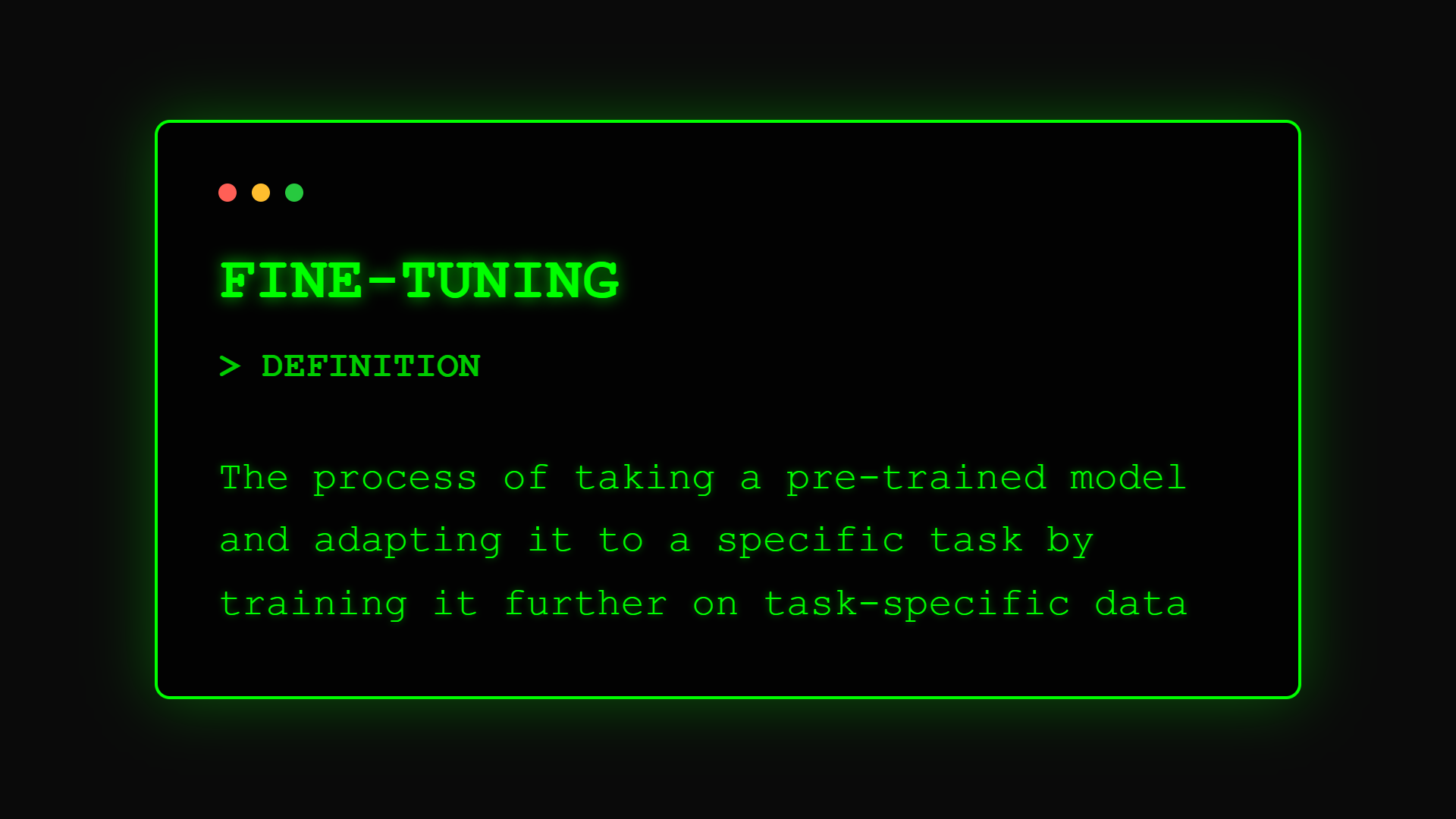AI Terms
What is Fine-tuning? Making AI Speak Your Language

Generic AI gives generic answers. But what if AI could learn your company's unique terminology, follow your specific processes, and reflect your brand voice? Fine-tuning transforms general-purpose AI into your specialized expert.
The Customization Revolution
Fine-tuning emerged from transfer learning research in deep learning, where models trained on large datasets could be adapted for specific tasks. The practice became mainstream with BERT in 2018 and exploded with GPT models.
According to Google AI, fine-tuning is "the process of taking a pre-trained model and training it further on a smaller, task-specific dataset to optimize performance for particular use cases while retaining general capabilities."
The breakthrough realization: instead of training AI from scratch (millions of dollars), you could adapt existing models with just hundreds or thousands of examples (thousands of dollars).
Business Value of Fine-tuning
For business leaders, fine-tuning means taking powerful general AI models and teaching them your specific domain expertise, terminology, and requirements, like hiring an expert and training them on your company.
Think of fine-tuning as sending a talented generalist to specialized training. They retain their broad knowledge but become experts in your industry, understanding your products, speaking your language, and following your procedures.
In practical terms, this creates AI that writes in your brand voice, understands your technical jargon, follows your compliance requirements, and provides answers specific to your business context.
Components of Fine-tuning
Fine-tuning involves these essential elements:
• Base Model: The pre-trained AI system with general knowledge, like GPT-4 or LLaMA, providing the foundation of language understanding
• Training Dataset: Your curated examples showing desired inputs and outputs, teaching the model your specific patterns and requirements
• Learning Parameters: Settings controlling how much the model adapts, balancing between retaining general abilities and specializing
• Validation Set: Separate examples used to test performance, ensuring the model generalizes well beyond training data
• Evaluation Metrics: Measurements of improvement in your specific tasks, from accuracy to brand consistency
The Fine-tuning Process
Fine-tuning follows these steps:
Data Preparation: Collect high-quality examples of desired behavior. For customer service, this might be 1,000 exemplary support conversations
Training Configuration: Set parameters for learning rate, epochs, and batch size, determining how aggressively the model adapts to your data
Iterative Training: Model adjusts its parameters based on your examples, learning patterns while retaining general knowledge
This process typically takes hours to days, compared to months for training from scratch.
Fine-tuning Strategies
Different approaches suit different needs:
Type 1: Full Fine-tuning Best for: Maximum customization Key feature: Updates all model parameters Example: Creating specialized legal or medical models
Type 2: Parameter-Efficient Fine-tuning Best for: Resource-constrained scenarios Key feature: Updates only small portion of model Example: Adapting for brand voice
Type 3: Instruction Fine-tuning Best for: Following specific formats Key feature: Teaches response patterns Example: Generating structured reports
Type 4: Few-shot Fine-tuning Best for: Limited training data Key feature: Learns from minimal examples Example: Rare domain specialization
Fine-tuning Success Stories
Here's how businesses leverage fine-tuning:
Legal Example: Harvey AI fine-tuned models on law firm documents, creating AI that drafts contracts 70% faster while maintaining firm-specific language and compliance standards.
Healthcare Example: RadAI fine-tuned models on radiology reports, reducing report generation time by 50% while matching individual radiologist writing styles with 94% accuracy.
Finance Example: Bloomberg fine-tuned their BloombergGPT on financial data, creating AI that understands market terminology and generates accurate financial analysis unavailable from generic models.
Starting Your Fine-tuning Journey
Ready to customize AI for your needs?
- Understand base models via Large Language Models
- Prepare quality data using Data Curation principles
- Choose your approach with Transfer Learning
- Execute with our Fine-tuning Blueprint
FAQ Section
Frequently Asked Questions about Fine-tuning
Part of the [AI Terms Collection]. Last updated: 2025-01-10